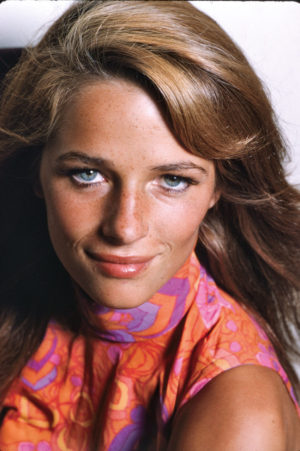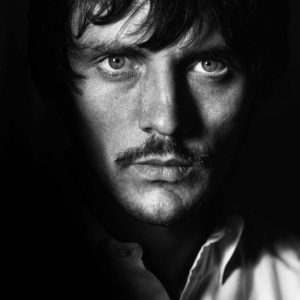
Photographer David Bailey (born 1938) is said to have given us a visual vocabulary with which we remember Swinging Sixties London. But he didn’t do it alone.
 Though not as celebrated, Terence Donovan (1936-1996) and Brian Duffy (1933-2010) did groundbreaking work in their own right. All three triangulated fashion photography with movies and pop culture and in so doing, introduced models Jean Shrimpton, Joanna Lumley and Celia Hammond to the world. The indispensable trio caught common visual components of the mod Sixties: young, driven, attractive, irreverent, and fun people.
Though not as celebrated, Terence Donovan (1936-1996) and Brian Duffy (1933-2010) did groundbreaking work in their own right. All three triangulated fashion photography with movies and pop culture and in so doing, introduced models Jean Shrimpton, Joanna Lumley and Celia Hammond to the world. The indispensable trio caught common visual components of the mod Sixties: young, driven, attractive, irreverent, and fun people.
Their lives behind and away from the camera formed a composite inspiration for David Hemming’s’ character in Michelangelo Antonioni’s movie Blow Up (1966).
A new coffee table volume, Terence Donovan Portraits (Damiani) collects magazine work from 1951 to the 1990s. Donovan’s acute eye, great instincts and improvisational impulses are all on abundant display.
 Like Bailey, Donovan came out of London’s tough East End. After military service, Donovan worked in the busy studio of London fashion photographer John French. Bringing a magazine esthetic to newspapers, French posed models in studio settings without a hair askance.
Like Bailey, Donovan came out of London’s tough East End. After military service, Donovan worked in the busy studio of London fashion photographer John French. Bringing a magazine esthetic to newspapers, French posed models in studio settings without a hair askance.
Donovan opened his own studio at 22. He took models out into the street, giving them a sense of context, drama and social realism. As Bailey discovered and made Shrimpton a star, Donovan did the same for the unknown Hammond. Both photographers developed vital collaborations with these models, who were muses and lovers. When Donovan shot a skinny teenager with exaggerated eye makeup in front of a Union Jack, Twiggy was an instant sensation.
 Donovan’s work for Man About Town (later shortened to Town) helped to make the magazine the GQ of Britain. As he had with women, he placed men in street situations, often in gritty East End settings. His spy-themed photo essays pre-dated the James Bond wave and one Donovan model screen tested for 007. The role was given to another London model named Connery.
Donovan’s work for Man About Town (later shortened to Town) helped to make the magazine the GQ of Britain. As he had with women, he placed men in street situations, often in gritty East End settings. His spy-themed photo essays pre-dated the James Bond wave and one Donovan model screen tested for 007. The role was given to another London model named Connery.
Terence Donovan Portraits spans many years but it’s the young go-getters of the sixties that are the most vibrant subjects. After 15 years of deprivation, the United Kingdom’s young generation was hungry for any scrap of opportunity and willing to make the most of it: A lean Anthony Newly (’61) stares down the camera through his own hand-framing. Actress Nancy Kwan’s elegant profile (’63) balances her perfectly formed Sassoon cut with a lovely visage. A glowing Patti Boyd (’66) stands on top of the world, having just married Beatle George Harrison. Where Terence Stamp (’67) is both predatory and feral, Maggie Smith (‘64) is a pert sprite. The quiet intensity of fashion icon Mary Quant (‘63) embodies the talent, drive and ambition that infused London in those days.
Donovan’s actress layouts (Sophia Loren, Claudia Cardinale, Julie Christie, Sarah Miles) are empathetic. They’re not divas or sex symbols, just women being themselves and playful at that. Whether Donovan transferred his own sense of optimism and play to his subjects or he just brought it out is moot; the point is his portraits are alive with realness.
Donovan died by his own hand and as he moved on in his post-‘60s work to advertising and videos, he claimed no nostalgia for the decade that made his reputation. Still, it’s not hard to imagine that in the middle of his last bout with depression, Donovan missed that time and the excitement it exuded.

Kirk Silsbee<publishes promiscuously on rock, jazz and culture.
Photo credits: Photograph Terence Donovan © Terence Donovan Archive
